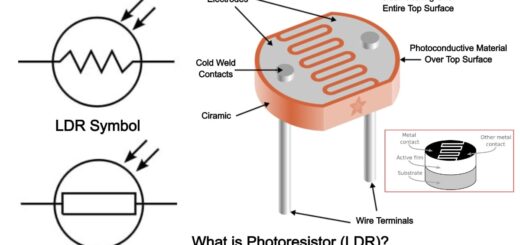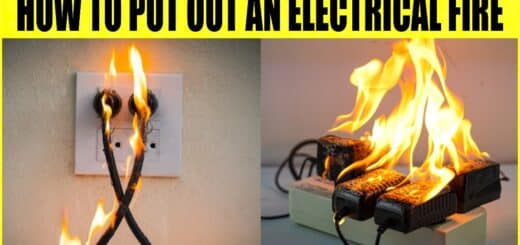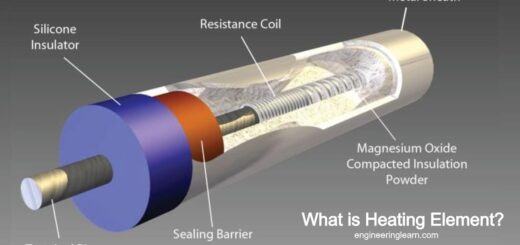Bad Breaker: Common Symptoms of Bad Breakers, How to Tell if a Circuit Breaker is Bad?

Introduction
Bad Breaker: Common Symptoms of Bad Breakers, How to Tell if a Circuit Breaker is Bad? – Electrical circuits are protected from outrageous currents utilizing circuit breakers. A circuit breaker is a programmed switch designed to safeguard or protect electrical systems. You will need to see regardless of whether your circuit breaker trips immediately or not. On the off chance that your circuit breaker is tripping right away, that is something that definitely needs quick consideration and expert assistance. This regularly means that there is an issue with a faulty breaker or a short circuit. Then again, your circuit breaker doesn’t trip right away, it generally implies that your circuit is over-burden.
At the end of the day, there is more electricity moving through it than what it can deal with. You can take a stab at tackling this issue yourself, by moving around a portion of your electrical parts to another circuit, so the electricity flowing through each circuit is equally parted.
What Does a Bad Breaker Mean?
A bad breaker implies a state of the circuit breaker that has stopped working, tripping, has a burning smell, hot to touch, or potentially has physical damage. Exactly when the circuit breaker turns bad it can’t do its protection task as required! It is not reasonable for reset and use. It’s worth mentioning that the bad circuit breaker isn’t equivalent to the tripped breaker. You can reset a tripped breaker, while the bad breaker ought to be replaced.
At any Point can you Fix a Terrible Electrical Switch and Reuse it?
Bad breakers can’t be fixed and you need to replace them. By and large, resetting the breaker will restore power as long as the load has been minimized and the load has not too been exceeded a specific value. A bad circuit breaker needs to be replaced. Circuit breakers are designed to deal with a certain current value in normal operation and a short circuit current value in faulty conditions.
On the off chance that the current exceeds the rated value of the circuit breaker, the breaker will trip without being damaged. In the event that the circuit breaker trips because of a current lower than the circuit breaker, short circuit the current will trip without being damaged. Then again, it will get damaged on the off chance that the short circuit current exceeds the designed short circuit current of the breaker.
What are the Steps Which tell if a Circuit Breaker is Bad?
Step-by-step process to Let Know if a circuit breaker is bad: –
Step 1. Unplug all Connected Electronics
It is suggested that you first remove all electronics connected to a circuit that you’re going to alter. Be that as it may, if you’re mindful, you can just explicitly remove any appliances connected to the certain circuit you’re going to test. On the off chance that you’re uncertain about the specific breaker’s circuit, you turn off all gadgets in the overall area of your working area. This is done primarily to prevent surging, which could damage your electronics and furthermore shock you unintentionally.
Step 2. Remove the Breaker Panel
Remember to wear your electric safety gloves and check if you have all the necessary tools before you start chipping away at this electric task. In the present scenario, remove or eliminate the panel covering the expanse of the entire breaker system. Contingent upon your home’s set-up, your breaker cover may be kept intact by screws or a handheld lock. One way or another, take extreme attention to removing the panel, as you would rather not unintentionally drop and damage it.
Step 3. Probe with Multimeter
Set up your multimeter as you presently will start testing whether your circuit breaker is bad. Cautiously connect the black wire to the ‘COM’ slot of the multimeter, while you connect the red wire to the slot marked with the letter V and Omega symbol (Ω). Hence, your multimeter will precisely examine the electrical switch’s voltage. Cautiously connect the testing tip of the red wire to the screw contiguously holding each individual breaker handle. In the interim, hold the tip of the black wire to the neutral bar of the circuit breaker. The neutral bar should be visible adjacent to the breaker handles themselves. They’re effectively visible, so you will not experience a lot of difficulties tracking down them. Be careful while you’re examining every breaker exclusively.
Ensure that your skin doesn’t contact any of the metal parts of the circuit panel while you’re conducting your test, as you could get accidentally shocked. This works with the multimeter to read the total voltage capacity of the circuit breaker. Contingent upon the specifications of the breaker, your multimeter reading ought to be around 120 – 250 V, depending upon whether it is a solitary pole or a double-pole breaker. Notwithstanding, if your voltage reading is zero, you might need to replace the affected circuit breaker. A zero reading implies that the breaker is faulty, and may cause inappropriate electric mishaps whenever left unchecked.
Commons Symptoms of Bad Breakers
Besides, directly testing each breaker on the off chance that it’s faulty there are likewise indicative signs of whether a circuit breaker is bad.
1. Burning Smell
This is immediately a sign that something has turned out badly with your circuit breakers. In the event that you smell something burnt emanating from the circuit breakers, now is the right time to apply a check and see whether all is great with your electrical wirings.
2. Breaker Trips Frequently
In the event that your circuit breaker often trips, this might be an indication that either your circuit is bad, or the breaker is defective. By the by, you should quickly watch out for your circuit breaker assuming that tripping consistently happens.
3. Breaker’s Hot to Touch
This is one more sign that you should be careful about with regard to your circuit breakers. A hot breaker could imply that a circuit is overloaded, which manifest through the production of heat. At the point when this occurs, you promptly call a professional electrical expert to prevent further electric mishaps from escalating.
4. Evident Circuit Breaker Damage
You ought to always check whether your circuit breaker and its panel have some perceivable damage. This is on the grounds that the heat produced by a faulty breaker may have caused external damage.
5. Longevity of Breaker Operation
Another crucial aspect that you should consider is the overall age of the circuit breaker. Clearly, the age of the breaker signifies its functional condition. As the standard goes, the older the breaker, the more prone it is too faulty trips.
6. Overloaded Circuit
The overloading of the circuit will bring about a tripped breaker since the circuit is being utilized for 37.5 Amps, well over the designed maximum load of the breaker. Prior to resetting a breaker, consistently confirm what is connected with the circuit and what the evaluations are for the equipment. In the event that the equipment is within the maximum allowable current, check for other failures. It is really a good idea to check whether a customer is overloading or over-burdening a circuit breaker when they complain about the failure of a circuit breaker. Utilize a clamp meter to measure the current being utilized on the circuit.
7. Power Surges and Spikes
Overall, Electrical technicians expect that overload and short circuits are the main causes of the failure of the circuit breakers. Yet, there are different reasons too, for example, power surges and spikes. Electrical circuit breakers are affected by Voltage and power surges and spikes, a typical event in electronic parts, likewise causing failure. The threat of failure can be limited when electrical panels are equipped with surge suppressors. Be that as it may, this doesn’t eliminate failure completely.
8. Bad or Faulty Wiring, Loose Connections
Always ensure wires are firmly connected with the breaker and check for similar connection errors on all connected appliances. Loose wires can likewise cause arcing in circuits. For high amp equipment, make sure that wires are tightened to the manufacturer’s specified torque. Insulated torque screwdrivers have been designed explicitly for this reason.
9. Short Circuit
Short circuits are one of the main sources of circuit breakers to fail. In this way, rather than having current go through a motor or heating component, it tracks down a way around them. This short circuit draws a huge amount of current, quickly tripping the breaker. The breaker does what it is designed to do, interrupting the progression of electrons, before the short circuit damages wiring and other equipment.
Hence, in the event that you receive a complaint about circuit breaker failure, you should check for a circuit. Utilize your multimeter for this, really taking a look at possible connected appliances. Try not to just utilize try and fall here – essentially turning on the breaker and seeing which machines trip the breaker is a sure way to damage equipment or even create a fire in the circuit wiring.
10. Old Age
At times, the circuit breaker can begin to glitch basically on the grounds that it is old. After some time, a circuit breaker can become worn out and start to lose its viability. This implies that it won’t have the option to deal with a similar amount of current as when it was new. In the event that your circuit breaker has been in use for over 10 years, it very well may be an ideal opportunity to start thinking about it.
How to Test for a Bad Breaker Yourself?
Assuming you’re uncertain if your breaker is working accurately, there are multiple ways of testing its functionality yourself. To begin with, start by turning off the power to the circuit and unscrewing the faceplate of the outlet. When you approach the wires inside, utilize an ohm meter or continuity tester to check for any irregular readings or shorts. Assuming you encounter any, it implies that your breaker is likely malfunctioning and should be replaced immediately.
Whenever you’ve identified any irregularities or different indications of a bad circuit breaker, it means a lot to contact a qualified electrician to review and repair it. Albeit this might require an investment in time and money, doing whatever it may take to ensure the safety of your home is generally worth the effort.
Why it is Important to Know if Your Circuit Breaker is Bad?
This is to prevent catastrophic mishaps from happening to your homes. As you’re never aware of the possibility of fire risks brought about by electric sources, you should continuously ensure that your fail-safe systems are well-intact and functioning. Obviously, a faulty circuit breaker can’t effectively perform its duty; thus, you ought to take extreme attention to detail of them to prevent a fire from damaging and in any event, engulfing your home.
Furthermore, on the off chance that you didn’t have any idea, fires, regardless of how small, will continuously diminish the value of your property. Hence, in the event that you’re anticipating selling your home in the future, it’s in the best of your inclinations to preserve the structural integrity of your home. This includes taking care of each feature of your property, including your circuit breakers.
Conclusion
On the off chance that the circuit breaker goes bad, the only choice is to replace it – circuit breakers are not user serviceable and are generally sealed, preventing users from opening them. It is crucial to check them properly and pursue a decision on whether to replace them or maintain them. The proper testing of the circuit and its loads will keep the circuit breakers from going bad. Circuit breakers by and large don’t have a definite life expectancy.
Humid conditions shorten their life expectancies while moderate climates or dry conditions delay them. Breakers that consistently trip from over-burdens or breakers that have been pushed beyond their design specifications may only last a couple of years.
Content Source: – techtownforum
Image Source: – istockphoto













